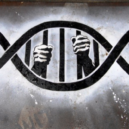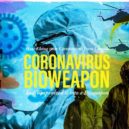IS BODY HEAT- A CRIMINALS WORST ENEMY?

On a beautiful April day in 2013, Henneberry decided to check on his boat which was sitting in the backyard of his house in Watertown, Massachusetts, USA. He noticed that something was off his boat when he put his ladder on the side of the boat and climbed it. He noticed blood and something which looked like a crumpled body beneath the tarp with which the boat was covered in. On seeing which, he freaked out and called 911. Police immediately dispatched a helicopter equipped with state of the art thermal imaging cameras called FLIR ( forward-looking infrared) device. Hovering over the area, the Helicopter spotted the heat impression of the second Boston Marathon bombing terror suspect 19-year-old Dzhokhar Tsarnaev. Within minutes, police, ATF, SWAT and K-9 units had descended on 67 Franklin Street and assumed positions even as the chopper kept fluttering and monitoring the body in the boat for more than an hour before police moved in and took the bleeding Chechen terror suspect Dzhokhar Tsarnaev into custody. The search for Dzhokhar Tsarnaev, a suspect in Marathon Boston bombing, considered one of the biggest manhunts in U.S. history, came to a successful end mainly due to high-tech thermal imaging cameras mounted on a chopper. Thermal imaging is a new technology which is proving invaluable to the police. The French police also used the thermal imaging systems in 2015 to find the two brothers suspected in the Charlie Hebdo massacre where they forced their way into the offices of the French satirical weekly newspaper Charlie Hebdo in Paris and killed 12 people and injured 11 others.
 Scientists have been studying the electromagnetic spectrum for hundreds of years. Back in the 1700s astronomer, William Herschel began observing the infrared part of the range, which is invisible to the human eye, by gazing at the sun with his telescope. There was not much empirical application of this science until soon after World War 2 when the U.S. Air Force started utilising infrared cameras for reconnaissance missions. Often confused with infrared, thermal imaging is a useful technique used in law enforcement. All objects have specific temperature and emit waves of energy called infrared radiation regardless of the visible light which is used to generate thermal images. Hot objects emit more energy than cold objects.
Scientists have been studying the electromagnetic spectrum for hundreds of years. Back in the 1700s astronomer, William Herschel began observing the infrared part of the range, which is invisible to the human eye, by gazing at the sun with his telescope. There was not much empirical application of this science until soon after World War 2 when the U.S. Air Force started utilising infrared cameras for reconnaissance missions. Often confused with infrared, thermal imaging is a useful technique used in law enforcement. All objects have specific temperature and emit waves of energy called infrared radiation regardless of the visible light which is used to generate thermal images. Hot objects emit more energy than cold objects.
Thermal imaging is a night vision technology as are near-infrared illumination, and low-light imaging. Thermal imaging boosts the visibility of objects in a dark setting by detecting the objects infrared radiation and creating an image based on that information. A variety of sources emit thermal energy. Many things, including living beings such as human beings, machinery and engines, create and emit heat either biologically or mechanically. Other things, like rocks, stones, land, vegetation, water etc. absorb the energy of the sun during the day and radiate it during the night.
 The thing that we discern when we peek through a thermal camera is the intensity of infrared energy spewed by objects or living beings. Thermal cameras detect and measure the thermal energy emitted from an object. As thermal and infrared energy is too long, it forms part of the electromagnetic spectrum that cannot be detected by the human eye but are only perceived as heat. All things having a temperature above absolute zero emit heat, which means that even ice emits infrared energy. Thermal cameras work better at night because thermal imaging is the technique of using the heat given off by an object to produce an image of it or to locate it. Thermal cameras also allow police officers to see areas of heat through smoke, darkness or heat permeable barriers. Thermal imaging cameras may also help police see through light fog, light rain and snow.
The thing that we discern when we peek through a thermal camera is the intensity of infrared energy spewed by objects or living beings. Thermal cameras detect and measure the thermal energy emitted from an object. As thermal and infrared energy is too long, it forms part of the electromagnetic spectrum that cannot be detected by the human eye but are only perceived as heat. All things having a temperature above absolute zero emit heat, which means that even ice emits infrared energy. Thermal cameras work better at night because thermal imaging is the technique of using the heat given off by an object to produce an image of it or to locate it. Thermal cameras also allow police officers to see areas of heat through smoke, darkness or heat permeable barriers. Thermal imaging cameras may also help police see through light fog, light rain and snow.
Thermal cameras employed in law enforcement allows police officers and security professionals to search, find and apprehend criminals more efficiently in unfavourable weather conditions, dense vegetation, forests or numerous other circumstances that usually impede the police from apprehending or discovering them.
For instance, imagine a situation wherein a police team is chasing a criminal on the Mettupalayam-Coonoor road with the police highway patrol car speeding right behind the criminal’s car. Abruptly, the criminal pulls his car to a screeching halt, jumps and starts fleeing into the dense forests filled with dense herbage on a dark night. The police team in highway patrol vehicle which has pulled up behind the criminal’s car are clueless, as they find the criminal has vanished into the dense jungle, and the environment is hazardous to venture into. Criminals giving the slip to the police in such situations happen all the time. In the present scenario, if the police team had been provided with a thermal imaging system, they would have instantly turned it on and started scanning the wooded area from the roadside in the direction in which the criminal has disappeared. When a thermal camera is in hand, pitch darkness and the dense forests do not matter at all because the camera doesn’t rely on the visible light to operate, and the police team would easily sight the criminal either hiding behind the bushes or perched on top of a tree or walking away. As the criminal and his position have been exposed to the police because of the heat emission from his body, the police team would be able to easily capture him without an extensive search in a challenging environment. This is just one example of how police officers can deploy thermal cameras.
 Similarly, thermal cameras are enabling the police to detect objects and people in complete darkness. This has proven to be very useful for police monitoring areas at night, and has led to the capture of criminals in hiding. This was the case in Baltimore, Maryland, when police caught three armed men hiding after committing an armed robbery. Despite fleeing the scene, the robbers were captured in a nearby dense forest using a thermal imaging camera that was attached to a roving police helicopter.
Similarly, thermal cameras are enabling the police to detect objects and people in complete darkness. This has proven to be very useful for police monitoring areas at night, and has led to the capture of criminals in hiding. This was the case in Baltimore, Maryland, when police caught three armed men hiding after committing an armed robbery. Despite fleeing the scene, the robbers were captured in a nearby dense forest using a thermal imaging camera that was attached to a roving police helicopter.
Likewise, a teenage girl in Lincolnshire, UK contacted the police and informed them that she had been raped but didn’t know where she was. Lincolnshire police used a drone with a thermal imaging camera to trace and get officers to her within minutes. And a man who had crashed his car in freezing night-time temperatures in Lincolnshire was saved from hypothermia when a police thermal-imaging drone found him. The man was discovered in a deep ditch.
Most thermal cameras display the pictures in black and white while there are expensive cameras available which reveal the variations in temperatures being exuded by the objects in different colours. The colour element is crucial for the firefighters as it helps them make decisions on safely entering a structure or to deduce the origin of the fire. As police officers mostly use the thermal cameras to track down criminals requirement of the colour display is not a must-have.
Even if the police departments were to procure a single shared handheld thermal imaging device, they without a doubt would find countless unique uses from tracing missing persons to unearthing hidden firearms, explosives, fleeing criminals, etc. They would have the ability to see through total darkness, light foliage, smoke or haze with the ability to separate camouflaged, motionless humans from the background clutter, a thermal device makes finding hidden bad guys far easier than night vision devices (NVD). Plus, they work 24 hours a day.
Police officers in India mostly use a flashlight, which is not enough because the criminals see police officers coming and know what they are looking for. Nothing can serve the police officers better for surveillance than thermal imaging cameras. In my viewpoint, thermal should go to all crime parties, Disaster Relief teams, Highway patrols, Special Task Force, Naxalite Special Divisions, etc.
Thermal cameras have multiple uses. In Highway patrol vehicles they can detect contraband in passing trucks and cars. They can unravel the existence of secret compartments as well as the presence of explosives and narcotics as they possess different thermal signatures. Use of a thermal imaging camera can quickly, easily and non-destructively point out areas that need further investigation.
Thermal imagers can also be used to determine if any vehicle was recently driven rather than sneaking up to a car to check if it was recently used. A quick drive-by using a thermal imager would show a hot engine and confirm that the criminal was recently on the move. In many years of my experience as a police officer, I have found suspects who are being chased discard or toss stolen items, or weapons while making good their escape. Such things, including firearms wherever they are dropped, including tall grass or shrubs, can be easily discovered using a thermal imager. Or if the criminals run into a dark cave or into tunnels or dense forests thermal imagers can serve as a perfect tool to trace them and nab them. Criminals who lurk in dark alleys and isolated places could get revealed in vivid colour with thermal imaging cameras. Thermal imagers, therefore, could prove invaluable also for patrol vehicles, drug units, crime teams etc.
Thermal images are amazing devices for detecting illegal drug labs, clandestine cultivation of marijuana in either fields or in buildings. They can also help find hidden drug stocks or discarded equipment for the illegal manufacture of drugs. Hi-tech cameras on board West Midlands Police’s Cannabis Disposal Team helicopters are detecting cannabis factories in Wolverhampton, UK. High quality remarkable thermal pictures taken from police copter is bringing illegal cannabis-growing business out of the dark and leading officers straight to the gate of the criminals. Drug farms are being detected due to the white heat given off by the powerful lights needed to cultivate the plants. The amount of heat these lights give off is enormous, occasionally houses operate even up to 50-600 watt lamps at a time.
Choppers equipped with thermal imaging cameras could help in SWAT operations, fugitive search, locating naxalites or terrorists hiding or roaming in the jungles or in the deserts or other environments. Because of the ability of thermal imagers to scan massive areas thermal imaging can sweep an area with ease and locate a person who is hiding, or lying unconscious or is uncooperative. Thermal cameras help the police to retrieve them by highlighting their heat signature. Day or night, in fair or foul weather, whether for public security or private security thermal imagers are likely to become essential in the days to come.
Thermal imagers also help security teams to detect intruders if any in critical installations such as nuclear and space facilities as well as rapidly search grounds and buildings for trespassers. They can also be used to prevent sabotage of machinery or boilers in industrial environments by detecting overheating or malfunctioning electrical systems that might present a looming fire risk. Furthermore, thermal imagers can often find the source of chemical leaks or other environmental contamination due to the different thermal signatures. Thermal imagers have been found to be better than tracking or sniffing dogs for tracking criminals, poachers, hidden explosives, firearms in open spaces or closed spaces and in the dark.
Authorities are foretelling that thermal imaging will ultimately become as universal as GPS, RFID, and wireless communication. Handheld thermal devices are becoming smaller, lighter and less expensive.For instance, FLIR cameras are now available for as little as ₹40000 or $600. Higher resolution models and longer range law enforcement models are available from $1,999 onwards.
Just as we exude body heat which can be imaged thermally, human beings being spiritual, radiate their spiritual heat or energy as an aura. A person’s aura is composed of several strands of energy that are released by major chakras (energy centres) of the body. Like the thermal cameras which catch body heat, the human aura can be captured by Kirlian photography. We are all capable of developing and sporting a magnificent aura which radiates peace and serenity by cultivating a rich inner life.
Source from: epaper/deccanchronicle/chennai/dt:09.12.2019
 Dr.K. Jayanth Murali is an IPS Officer belonging to 1991 batch. He is borne on Tamil Nadu cadre. He lives with his family in Chennai, India. He is currently serving the Government of Tamil Nadu as Additional Director General of Police, Law and Order.
Dr.K. Jayanth Murali is an IPS Officer belonging to 1991 batch. He is borne on Tamil Nadu cadre. He lives with his family in Chennai, India. He is currently serving the Government of Tamil Nadu as Additional Director General of Police, Law and Order.


